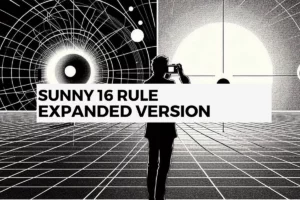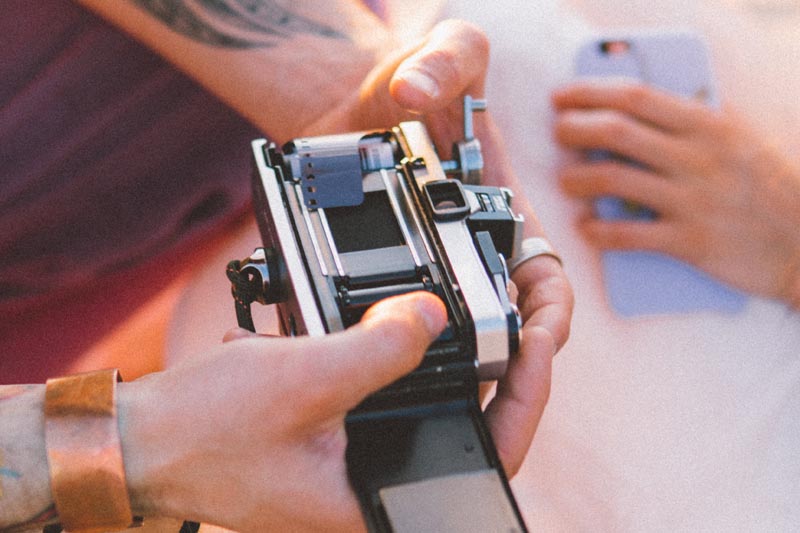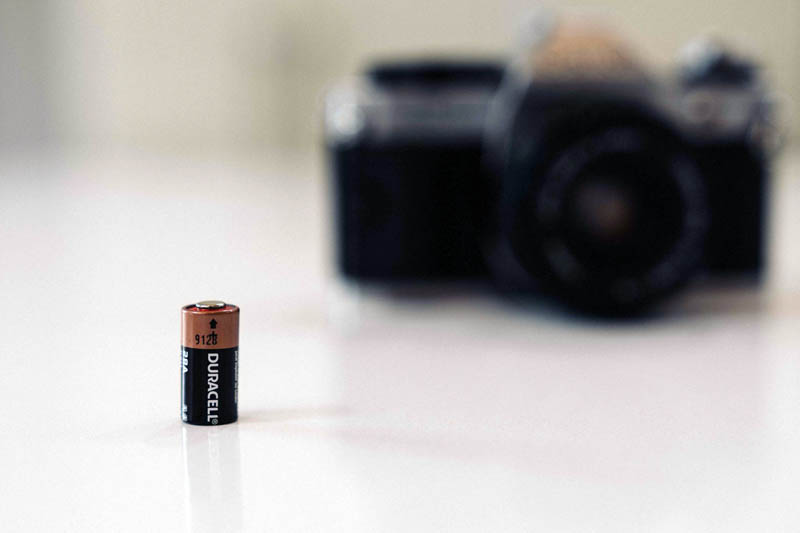Parts of a Film Camera: Understanding the Components
Last Updated on March 7, 2023
Understanding the different parts of a film camera can be an essential step in learning how to use one properly. In this article, we will explore the various components that make up a film camera and their functions.
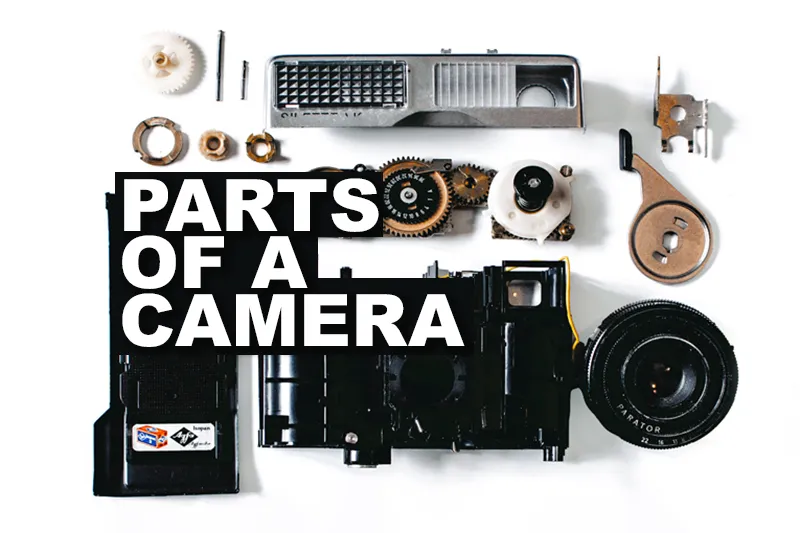
Before we dive into the different parts of a film camera, let’s first review what a film camera is and how it works:
A film camera captures photographs using film that is sensitive to light. The film is loaded into the camera, and when the shutter is released, light passes through the lens and onto the film, creating an image. If you’re interested in understanding how a film camera works, read this article.
Table of Contents
Body
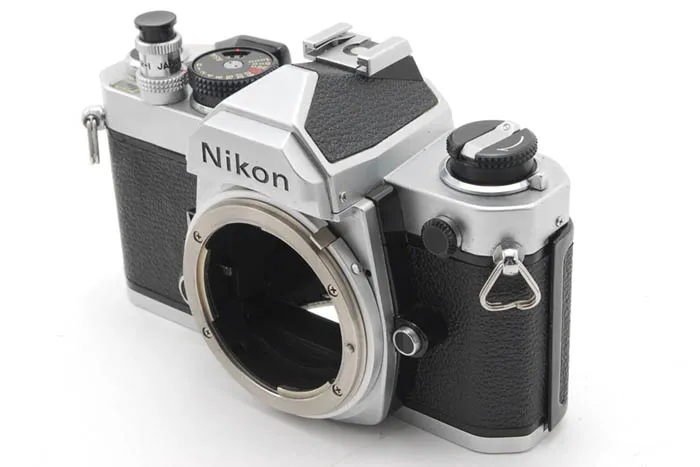
The body of a film camera is the main structure that holds all the other components together. It is typically made of metal or plastic and is designed to be durable and long-lasting. The body also contains the film chamber, where the film is loaded, as well as the mechanisms that control the shutter, ISO and film winding.
Lens
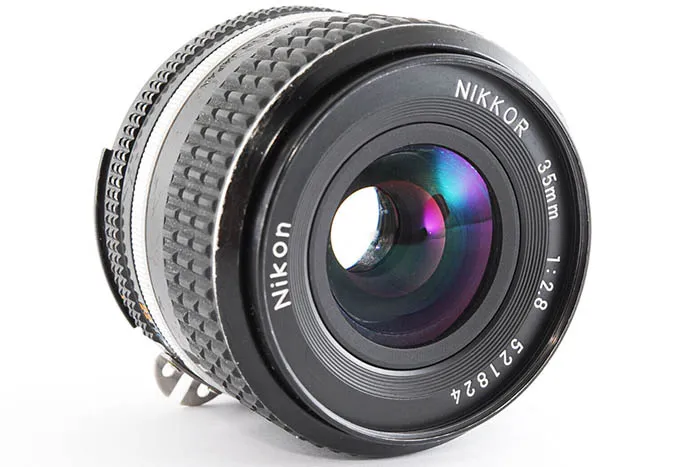
The lens is perhaps the most critical component of a film camera. It is responsible for focusing the light that enters the camera and creating a sharp, clear image. There are many types of lenses available, each with different focal lengths and apertures that affect how the image appears. The lens can also be changed out for different lenses, depending on the photographer’s needs.
The lens affects two fundamental factors, as we said: aperture and focusing. Let’s take a look at what they are:
Aperture
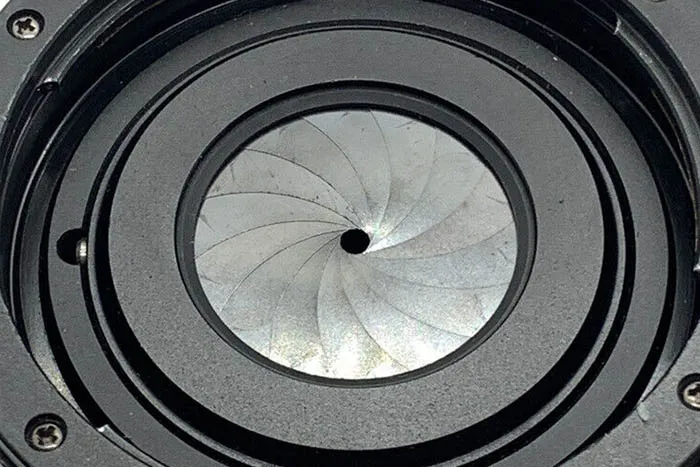
The aperture is an opening in the lens that controls the amount of light that enters the camera. It is measured in f-stops, with smaller f-stop numbers indicating a larger aperture and more light entering the camera. The aperture also affects the depth of field, or the area of the image that appears in focus. A larger aperture creates a shallower depth of field, while a smaller aperture creates a deeper depth of field.
The aperture adjustment is made through the aperture ring on the lens (in manual lenses), right next to the focus ring.
Focusing Mechanism
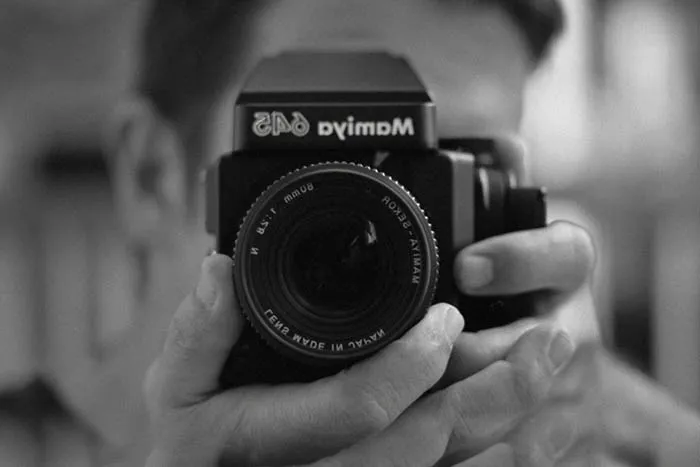
The focusing mechanism is what allows the user to adjust the focus of the lens. This can be done manually, by turning a ring on the lens, or automatically (AF), using a motorized mechanism built into the camera.
Shutter

The shutter is a essential component of a film camera that controls the amount of time that light is allowed to pass through the lens and onto the film. It opens and closes at various speeds, ranging from fractions of a second to several seconds or more, depending on the camera’s settings.
It is located within the body, between the film and the lens aperture and focus system. The shutter works in conjunction with the speed we choose on the shutter speed selector and its activation through the shutter release button.
Shutter speed selector
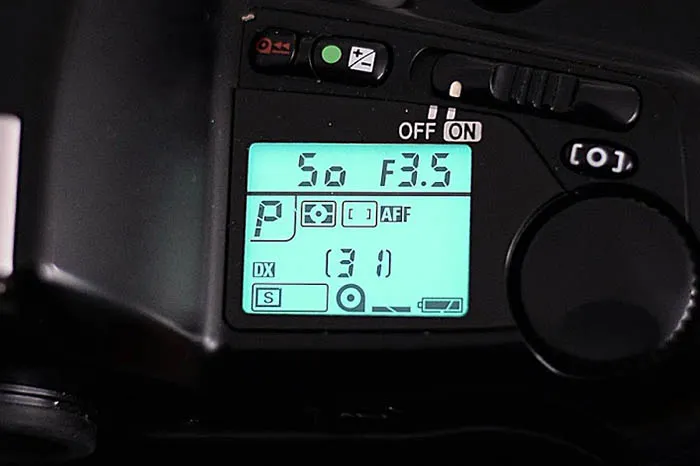
The shutter speed selector is typically located on the top of mechanical cameras (look below), and is adjusted using a dial or knob. These cameras typically have a range of shutter speeds that can be selected, usually ranging from a few seconds to 1/1000th of a second or faster.
In contrast, fully electronic cameras adjust the shutter speed using a small display, which can be found on the camera’s control panel or LCD screen. While the method of adjusting the shutter speed may differ between these two types of cameras, the importance of selecting the correct shutter speed for the desired effect remains the same.
Shutter release button
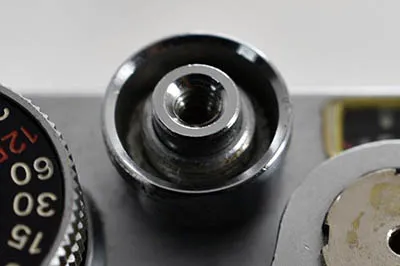
The shutter button is what allows the camera to take a photo, and is almost always located on the right-hand side of the camera. It is activated with the index finger.
ISO knob
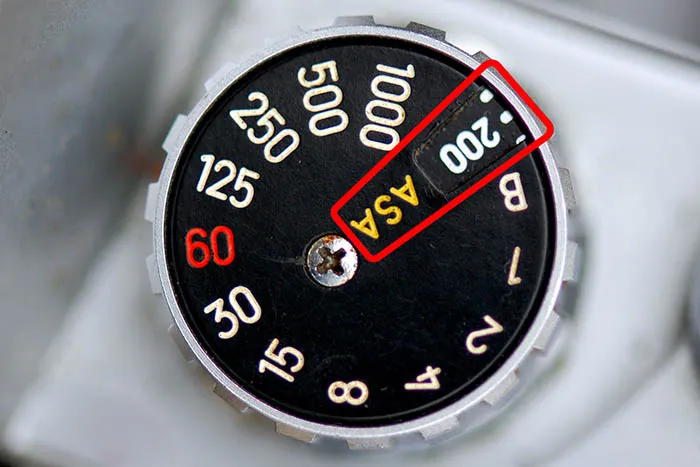
The ISO (ASA) / shutter speed dial on analog cameras is conveniently located on the top of the camera, providing the ability to adjust both ISO and shutter speed. In modern film cameras, the ISO setting is adjusted via the small display we previously saw in the image of the shutter speed selector.
Viewfinder
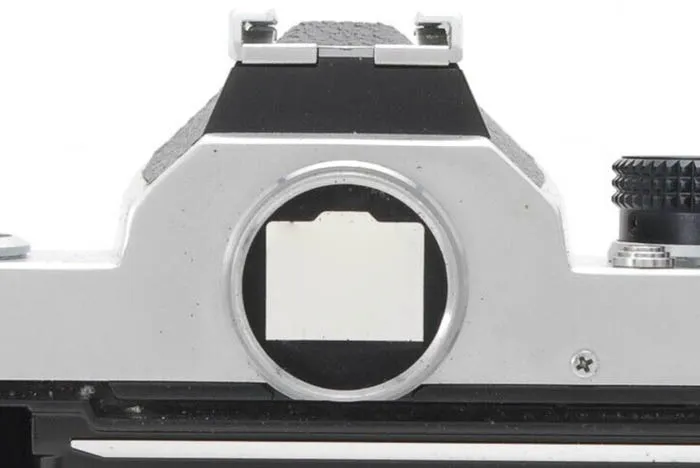
The viewfinder is the window through which the user looks to compose the image. It can be located on the top of the camera, on the back, or on the front. The viewfinder shows the photographer what will be included in the final image, as well as the light-meter current settings.
Light Meter
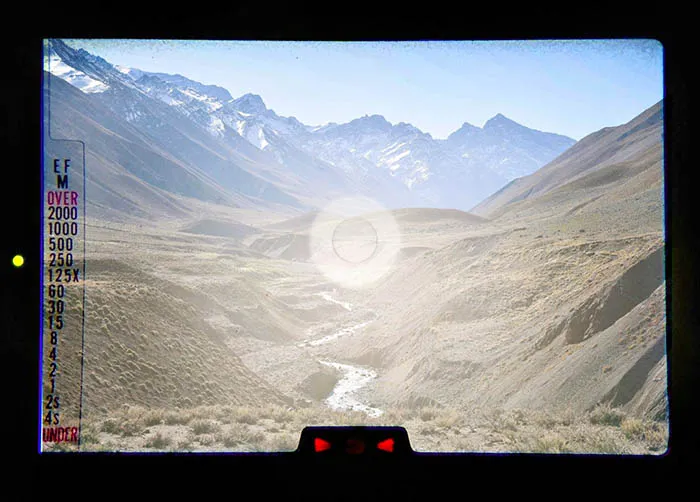
The built-in light meter in a film camera measures the light levels in the scene and suggests appropriate exposure settings for the camera, taking into account the ISO, aperture, and shutter speed. Depending on camera technology, measurement can be spot, center-weighted or/and matrix.
Film Winding Mechanism
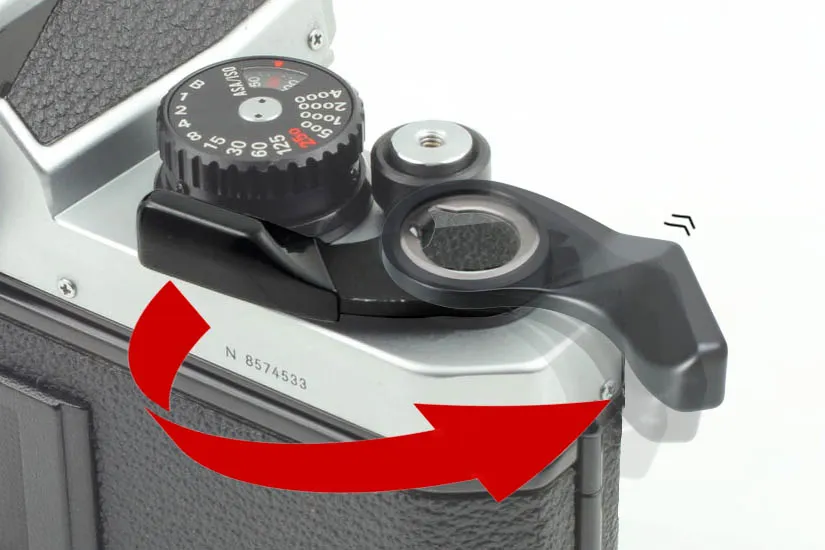
The film winding mechanism is what advances the film in the camera after each shot. Depending on the camera, this can be done manually, by turning a lever, or automatically, using a motorized mechanism.
Film Rewinding Mechanism

The film rewinding mechanism is what rewinds the film back into the cartridge once all the shots have been taken. This is typically done manually, by turning a crank. Just like the advance mechanism, this one can also be performed electronically and automatically (in modern film cameras).
Battery
Most film cameras require a battery to power the various components, such as the light meter and the motorized mechanisms. But… this is in the case that your camera is electronic, since there are many camera models, especially those manufactured before the 1960s, that do not require batteries.
There are many types of batteries, and there are cameras that only use a small battery to measure light, while others use the battery for the entire operation of the camera, such as those manufactured in the 90s.
If you’re interested in knowing what type of battery your camera uses, we recommend reading this article.
Conclusion
A camera is a sophisticated device with numerous components and parts that work together seamlessly to capture images. Mastering the art of photography requires a deep understanding of the various parts of a camera and how they function. By practicing and being patient, you can develop a strong familiarity with your camera, allowing you to utilize it to its fullest potential and capture stunning photographs.
FAQs
How many types of analog cameras are there?
There are many types of analog cameras, including point-and-shoot cameras, rangefinder cameras, SLR cameras, medium format cameras, large format cameras, and instant cameras, among others.
Each type of camera has its own unique features and advantages. It is important to research and consider your specific needs before choosing an analog camera.
How many types of film rolls are there?
There are many types of film rolls available for analog cameras, each with its own characteristics and advantages. The most common types of film rolls include color negative film, black and white film, color slide film, and instant film. Within each type of film, there are also different speeds or ISO ratings available, which can affect the quality and performance of the film.
If you are interested in learning about the types of film and formats that exist and have existed, read this article.
What is the best film camera format?
There is no one “best” film camera format, as each format has its own advantages and limitations depending on the intended use and personal preferences of the photographer.
For example, 35mm film is a popular format due to its compact size and ease of use, making it a great choice for street and travel photography. Medium format film, on the other hand, produces higher resolution images with more detail and is often preferred for studio and landscape photography.
Large format film is another option that allows for the highest level of detail and control, but it requires specialized equipment and can be more challenging to use.
Ultimately, the best film camera format will depend on the photographer’s individual needs, shooting style, and desired outcome.

Written by Jorge Ferrufino
“I am a fashion photographer and an analog photography enthusiast since the beginning of my career (15 years ago). I have had the opportunity and honor of showcasing my work in various galleries and publications around the world.“


